Cannabis Clues
How Often Should I Feed and Water My Cannabis?
We all know that our plants require both water and nutrients to thrive and grow to their full potential – but how much of each do they need, exactly? And how often should you feed and water them?
Unfortunately, we can’t just tell you something simple, like “8oz of water, once a day.”
Different plants may grow at different rates and experience varied nutrient needs, so instead of just memorizing a set of numbers, it’s better to learn how to read your plants’ signs to determine exactly what they need. Here’s how.
Learn to Grow Better Weed
Download our free guide to growing amazing cannabis at home.
Click Here For More Info
How often should I water my plants?
When it comes to watering your plants, too much of a good thing can definitely be a bad thing.
Cold, wet soil around your plants’ roots can lead to infections by anaerobic bacteria that could kill your plants.
And, even if an infection doesn’t happen, your plants’ growth will be negatively impacted by the lack of oxygen near the roots.
You want the soil to be wet, but not totally waterlogged, so make sure you use a pot with good drainage.
Generally, you can water every 2-3 days.
Each time you water, you should add enough water that you see 10-20% of it drain out of the bottom of the container.
This will help flush unneeded salts away from your plants’ roots, and keep the soil’s nutrient content at a healthy level if you are feeding your plants extra nutrients.

Check the soil with your finger daily to see how deep the damp goes – once the top inch or so of the soil is dry, you can water again
If it takes longer than 3 or 4 days for your soil to dry out, you may want to double-check that your pot is draining correctly and consider watering less frequently.
If the soil is drying out every day, try either watering more each time you water or transplanting to a bigger pot.
Watering and Feeding Cheat Sheet
| Stage | Watering Frequency | Feeding Type | Notes |
|---|---|---|---|
| Seedling | Every 2–3 days | None/light | Use spray bottle |
| Veg | Every 2 days or when soil is dry | Grow nutrients Once a Week | Check for runoff |
| Flower | Every 2 days or when soil is dry | Bloom nutrients Once a Week | Avoid overfeeding |
Other factors to consider when it comes to watering your cannabis plants.
- Soil content. The content of the soil you’re using (and how tightly it’s packed) can affect how quickly water drains through.
- Ambient temperature will also affect the rate at which water is absorbed and evaporated.
- Perlite in your soil helps it retain moisture, so consider mixing some in if you’re growing in an arid climate or if you have difficulty keeping your plants hydrated.
- Fabric pots can evaporate water through the sides as well as the top, which will lead to the soil drying out faster.
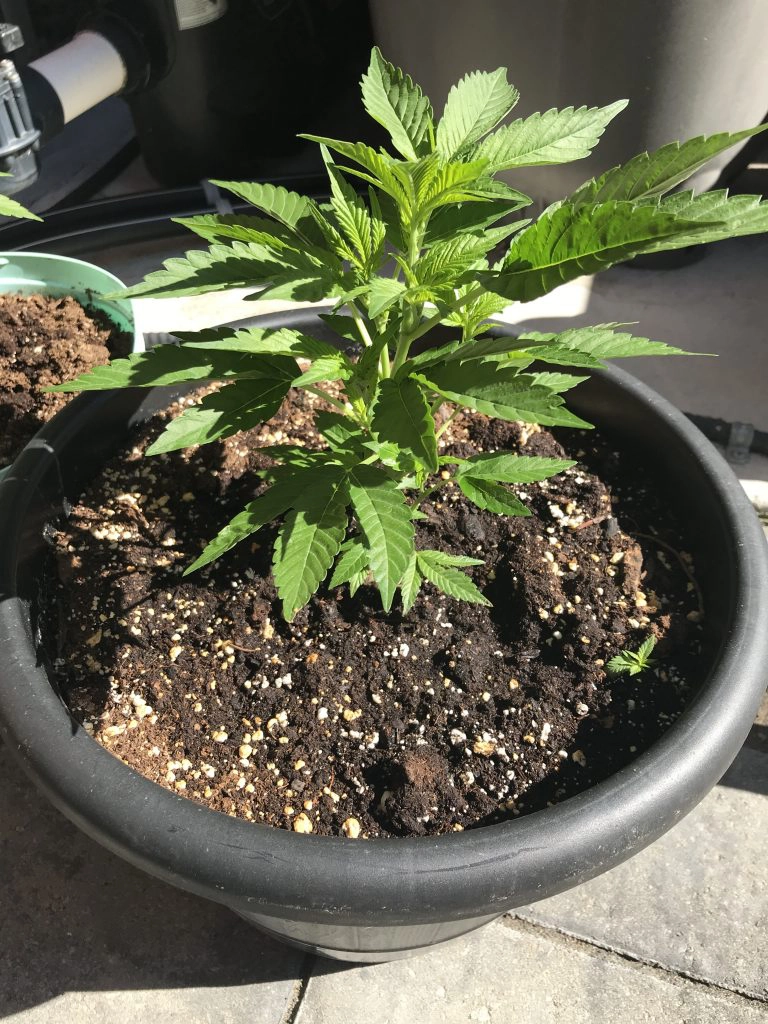
How often should I feed my weed plant nutrients?
First of all, make sure the fertilizer you’re using is formulated for cannabis – like Reefertilizer.
Nutritional needs are very different between vegetative and flowering plants, which is why Reefertilizer comes in two different bags: Grow for vegetative plants, and Bloom when they start to flower.

You won’t need to feed your plants at all while they’re just sprouts, as they will get all the nutrients they need from their first leaves (cotyledons).
Once your plant has 3 or 4 sets of true leaves, you’ll start adding nutrients, and continue to increase the amount as your plant gets bigger and requires more nutrients.
When it comes to how often to feed your plants, you have some choices. It’s perfectly fine to feed your plants just once a week.
Many cannabis fertilizers come with feeding charts that will tell you how much to give your plants per week, and it’s a good idea to stick to that prescription.
However, if your plants seem to be having health issues and you think a lack (or surplus) of nutrients could be the culprit, it may be a good idea to break that weekly prescription down into several smaller doses.
This will give you more opportunities to correct any imbalances.
Feeding your plants every day is probably overkill, but two feedings per week could be a good idea if you’re trying to pinpoint an over/under-feeding issue.
Should I Feed My Plants Every Time I Water?
The answer isn’t a simple yes or no. It depends on how your plants are doing and what stage of growth they’re in. With Reefertilizer, you want to ensure your plants are getting the right balance of nutrients for their current growth stage. It’s not always necessary to feed every time you water, especially if your soil still holds plenty of nutrients from the previous feeding.
One approach is to alternate between watering with plain pH-balanced water and watering with nutrient solution. This can help prevent nutrient build-up in the soil, which could harm your plants. Remember to look out for signs of nutrient deficiencies. If your plants show signs of deficiency and it’s not related to pH imbalance, you might need to adjust your feeding schedule.
And here’s a tip: after feeding your plant, you should see about 10-20% of the water draining from the bottom — it helps flush out any excess salts and keeps the nutrient level just right.

Signs of Water Problems
If your plants are getting too much or too little water, they’ll tell you. Here’s how to listen.
- Look for drooping. Droopy leaves can have a few different causes, but they’re usually caused by watering issues, such as giving your plant water too often or in excessive quantities.
- It can also happen if you give your plant a lot of water at once after allowing it to dry out, or if your grow area is too hot, too dry, or too humid.
- Limp, dry, or “crispy” leaves are a sign of underwatering. Keep an eye out for wilting as well.
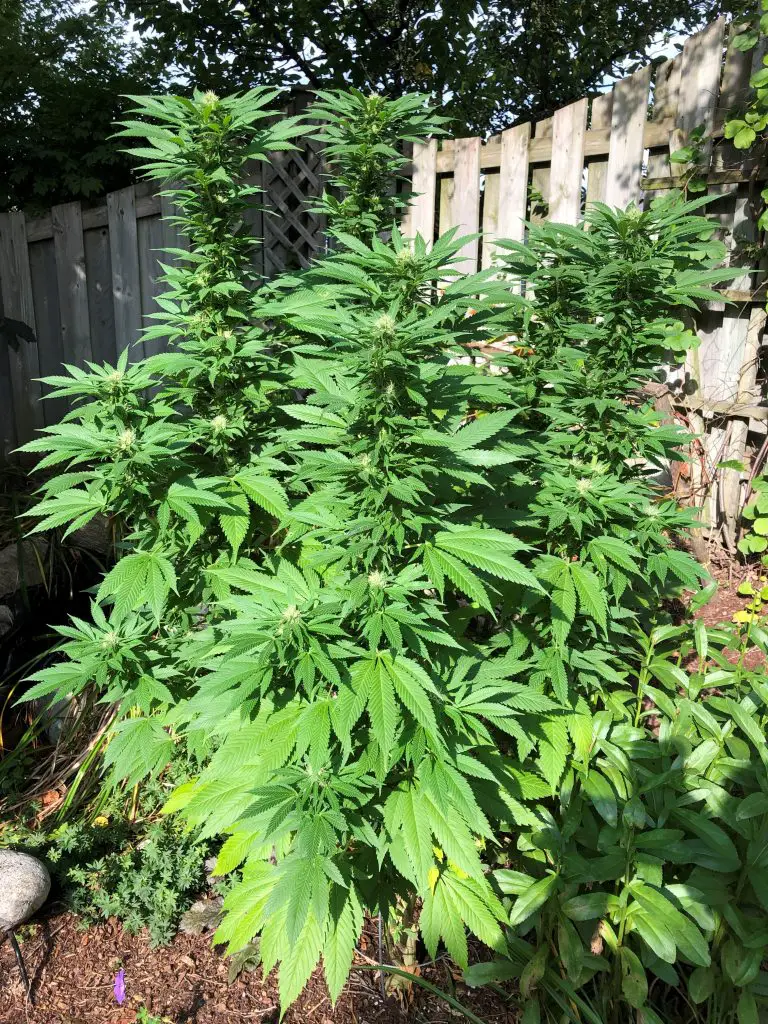
Are You Giving Your Cannabis To Much Nutrients?
As with watering, you can tell by looking at your plants whether they’re getting the right amount of nutrients.

- Nutrient surplus: Too many nutrients in your plant’s soil will cause nutrient burn. You’ll generally see darker green leaves at first, with yellowish or brownish tips that curl upward.
- As nutrient burn progresses, stems may turn a deep red or purple color. If this continues, the leaves will twist out of shape and die.
- If your plants are getting nutrient burn, stop feeding them and flush them with pH neutral water for a week. Then begin feeding again – but start with a lower amount and work your way up gradually.
- Nutrient deficiency: Nutrient deficiency can be caused by either nutrient lockout or underfeeding. Either way, you’ll likely spot the deficiency when dry leaves begin turning yellow or brown.
Don’t just start giving your plants more nutrients, though – if nutrient lockout is the problem, adding more nutrients will just make things worse.
In nutrient lockout, there is either a pH imbalance in your soil, or a buildup of salts and nutrients around the plants’ roots.
- Check the pH and the TDS of your soil runoff- if you find the problem there, flush your plants with pH neutral soil for a week to “unlock” your plants’ roots and begin feeding again.
- If your pH and TDS levels are where they should be, it’s not nutrient lockout – just underfeeding. In that case, go ahead and increase the amount of nutrients you’re giving your plants.
Don’t worry if there are small pH and TDS fluctuations between measurements. These measurements aren’t very accurate, so there will be some variation.
There’s no need to worry unless there’s a big change.
Final Tips and Tricks
- If your soil is packed too tightly, or your pots seem to be having issues draining, consider mixing your soil with perlite.
- This will loosen the soil and allow water to flow through more easily.
- Use room temperature water – around 20-23°C. Cold water can shock your plants’ roots and cause shock, and it’s also harder for plants to absorb nutrients from cold water.
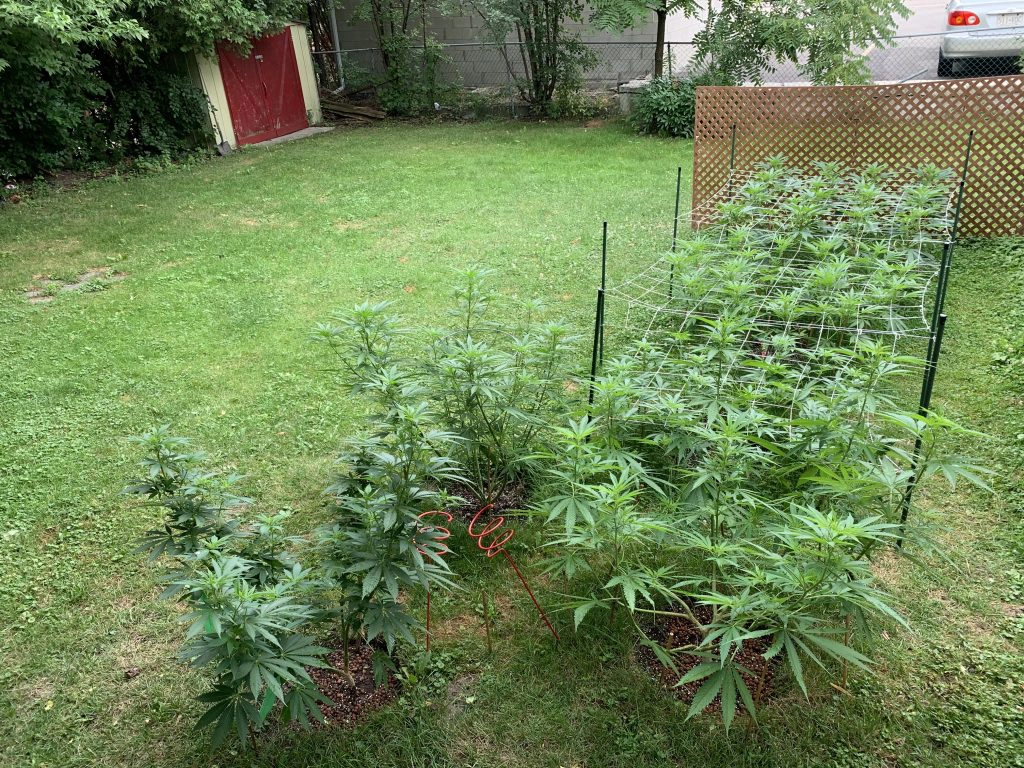
- Water your plants with the lights on. Plants won’t absorb the water until the lights are on, so watering with lights off will increase humidity levels in your grow area and reduce the temperature and oxygen level of your plants’ soil – not what you want!
Frequently Asked Questions
What happens if I overwater my cannabis plant?
Overwatering can lead to root rot, mold, and oxygen deprivation in the root zone. Your plant may droop, and the leaves may turn yellow. It’s best to let the top inch or two of soil dry out before watering again.
Can I feed and water at the same time?
Yes, many growers mix nutrients into their water and feed during regular watering. Just be cautious not to overfeed—start with a light dose and monitor how your plants respond.
How do I know if my cannabis needs nutrients?
If your plant’s leaves are pale, yellowing, or showing unusual spotting or curling, it could be a sign of a nutrient deficiency. Keep a close eye on growth speed and color, and consider using a feeding schedule.
Feeding and watering your cannabis plants is more complicated than just making sure they have enough of everything they need.
Just like Goldilocks, your plants will be unhappy unless their water and nutrient diet is “just right.”
Wait until your top inch of soil is dry before watering, and feed your plants once or twice a week.
Then, pay attention to how your plants look – most issues with either too much or too little water or nutrients can be visually identified and corrected.
Make sure your soil runoff’s pH and TDS readings are good, and you shouldn’t have any issues. Happy growing!
If you want to learn even more about growing good cannabis, we offer a free 40+ page guide full of images.
Now available on Amazon.
Sign up for our newsletter and download the digital copy today!
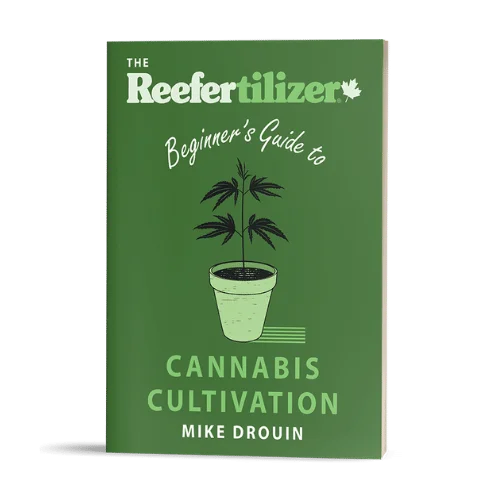
This guide will answer many questions about growing cannabis, like the following...
✔ Selecting Seeds
✔ Identify and Correct Problems
✔ Maximize Yield
✔ Much More...
Get a Chance to INSTANTLY WIN a Reefertilizer Nutrient Kit When You Sign Up.
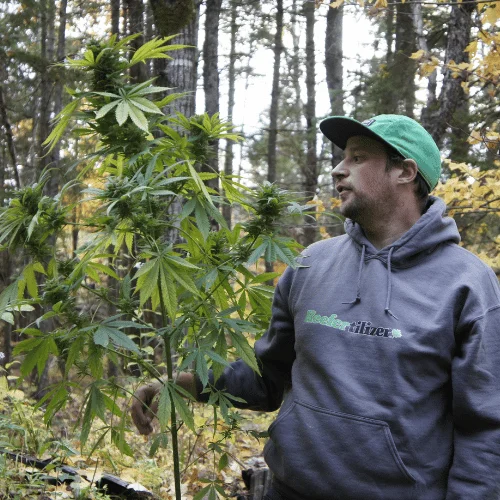
Mike Drouin is the co-founder of Reefertilizer. He’s an experienced craft cannabis grower and a writer of many articles regarding the process. Mike lives on Vancouver Island and enjoys cycling and camping and will sometimes combine the two.


